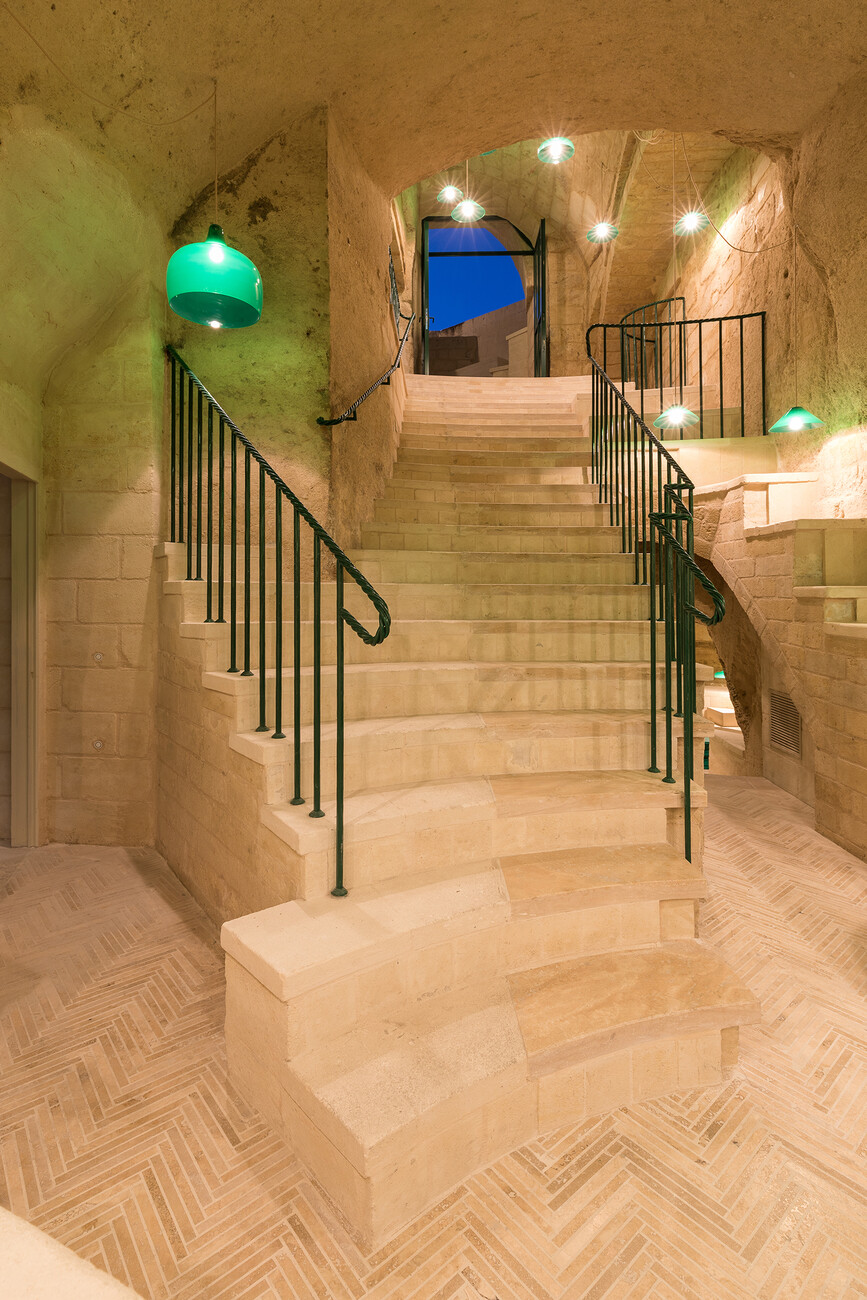Wine step by step
Two elements characterize the design for Enoteca “Dai Tosi” by De Vylder Vinck Taillieu architects – steps and stone. Both elements also happen to be typical of town of Matera in southern Italy’s Basilicata region. Located on a plateau in the Gravina di Matera valley, its old town is a labyrinth of alleyways and stairs hewn from the pale karst stone of the surroundings. Anybody enjoying the local wine at Dai Tosi is thus doing so in what could be described as the essence of the city’s architecture.
Matera is said to be one of the world’s oldest cities on account of its cave dwellings and in the 1950s it hit the headlines for all the wrong reasons when the conditions in the “Sassi” districts, hewn into the soft tuff stone there, were so wretched and so catastrophically unhygienic that the residents had to be resettled in new housing projects. It was only in the 1980s that their major historico-cultural significance was recognized, and the city’s old town was declared an UNESCO world heritage site in 1993. Incidentally: Matera is scheduled to become European Capital of Culture in 2019. Following painstaking maintenance and restoration work, life has now returned to the old town; artists and other creatives have settled there and hotels, restaurants and bars have opened in the district.
The architecture at Enoteca Dai Tosi is defined by flights of steps. Like a babbling brook these lead visitors downwards into the mountain, gently washing three levels like pools of water in the midst of a waterfall. The first flight of stairs takes the visitor down into a courtyard in front of the tavern. The steps become seats surrounding the courtyard, taking the visitor down into the taproom. This room is dominated by a green, wooden bar counter and a refined metal hand rail – likewise in green. Once again, the circular room is framed by steps which offer visitors the opportunity to sit down, and finally lead further downwards to the third level, which is also – how could it be otherwise – surrounded by steps.
A glass wall behind which the wines are stored divides this cavernous room into two sections. Here, grooves have been cut into the tuff steps, and it is here that the bottles nestle. The other section is used for tastings; it boasts a round, green, wooden bar table reassembling a fountain, and it is around this that visitors gather.
The architects have really succeeded in putting their finger on the defining features of this simple “Sassi” architecture – the untreated stone of the walls and the green luminaires suspended from the ceiling on “long leashes” – thus making it very reminiscent of the impoverished conditions in days gone past.
But that is it when it comes to memories of the past. It must be said that De Vylder Vinck Taillieu have been able to use subtle details to lend these simple rooms a contemporary flair. The delicate tiles in light terracotta have been laid in a filigree herringbone pattern and the frame of the glass partition wall sits in a slot cut in the tuff, meaning that the impression left by the room has not been spoiled by opting for some bulky anchoring. The rooms are furnished with a few items of almost sculptural furniture, all of them in bright bottle green – as we might have expected.















